Pendergast T., Pendergast S. St. James Encyclopedia of Popular Culture. Volume 1: A-D
Подождите немного. Документ загружается.


CAPTAIN AMERICAENCYCLOPEDIA OF POPULAR CULTURE
429
Although he had served in the military before, and was old enough to
sit this one out, Capra had an intense desire to prove his patriotism to
his adopted land. While a member of the Armed Forces, Capra
oversaw the production of 11 documentaries under the series title Why
We Fight. The series was originally intended to indoctrinate Ameri-
can troops and explain why it was necessary for them to fight the
Second World War. When the first documentaries were completed
Army and government officials found them so powerful that they felt
the films should also be released to theaters so that everyone in
America could see them. Considered by many to be some of the best
propaganda films ever made, the Why We Fight series is still broad-
cast and used as a teaching tool today.
Following the war, Capra found success with It’s A Wonderful
Life and State of the Union, but he increasingly came to feel out of step
with a changing film industry. While his themes had struck a chord
with the Depression era society, his films seemed saccharin and out of
touch in prospering post-war America. Moving to Paramount in 1950,
Capra claimed that he became so disillusioned with the studio that he
quit making films by 1952. In his autobiography he blames his
retirement on the rising power of film stars (compromising the ability
to realize his artistic vision), and the increasing budgetary and
scheduling demands that studios placed upon him. Joseph McBride,
in The Catastrophe of Success, however, points out that Capra’s
disillusionment coincided with the questions and difficulties sur-
rounding the House Committee on Un-American Activities (HUAC)
communist witch-hunt, which ended many Hollywood careers.
During a regrettable period of postwar hysteria Capra, de-
spite his military service and decorations, was a prime-target for
Senator Joseph McCarthy’s Red-baiting committee. Although Capra
was never called to testify, his past associations with blacklisted
screenwriters such as Sydney Buchman, Albert Hackett, Ian McLelan
Hunter, Calrton Moss, and Dalton Trumbo (to name a few) led to his
being ‘‘greylisted’’ (but employable). Determined to demonstrate his
loyalty he attempted to rejoin the military for the Korean War, but was
refused. When invited as a civilian to participate in the Defense
Department’s Think Tank project, VISTA, he jumped at the opportu-
nity, but was later denied necessary clearance. These two rejections
were devastating to the man who had made a career of demonstrating
American ideals in film. Capra later learned that his application to the
VISTA was denied because he was part of a picket-line in the 1930s,
sponsored Russian War Relief, was active in the National Federation
for Constitutional Liberties (which defended communists), contribut-
ed to the Joint Anti-Fascist Refugee Committee in the 1940s, and had
a number of associates who were linked to the Communist Party.
Significantly, Capra made few films once the blacklisting began,
and none of them approached his previous critical and box office
success. By 1952, at the age of 55, Capra effectively retired from
feature filmmaking to work with Caltech and produce educational
programs on science. Once one of the most popular and powerful
storytellers in the world, Capra’s disenchantment with the business
and political climate of filmmaking left him disconnected from a
culture that was rapidly changing. Although he did make two more
major motion pictures A Hole in the Head (1959) and Pocketful of
Miracles (1961), Capra would never again return to the perch he
occupied so long atop the filmmaking world. In 1971 he penned his
autobiography The Name Above the Title, which served to revive
interest in his work and cement his idea of ‘‘one man, one film.’’ And
since his death in 1991, Frank Capra has been honored as one of the
seminal figures in the American century of the cinema.
—James Friedman
F
URTHER READING:
American Film Institute. Frank Capra: Study Guide. Washington
D.C., The Institute, 1979.
Capra, Frank. The Name Above the Title: An Autobiography. New
York, Macmillan 1971.
Carney, Raymond. American Vision: The Films of Frank Capra.
Cambridge, Cambridge University Press, 1986.
Maland, Charles J. Frank Capra. New York, Twayne Publish-
ers, 1995.
McBride, Joseph. Frank Capra: The Catastrophe of Success. New
York, Simon & Schuster, 1992.
Sklar, Robert and Vito Zagarrio, editors. Frank Capra: Authorship
and the Studio System. Philadelphia, Temple University Press, 1998.
Captain America
Captain America is one of the oldest and most recognizable
superhero characters in American comic books. A flagship property
of Marvel Comics, Captain America has entertained generations of
young people since the 1940s. Perhaps no other costumed hero has
stood as a bolder symbol of patriotic American ideals and values.
Indeed, the history of Captain America can not be understood without
attention to the history of America itself.
Captain America sprang forth from the political culture of World
War II. In early 1941, Joe Simon and Jack Kirby created the character
for Marvel Comics, which was struggling to increase its share of the
comic-book market. As early as 1939, comic books had periodically
featured stories that drew attention to the menace of Nazi Germany.
Simon and Kirby, who were both Jewish, felt very strongly about
what was happening in Europe under the Nazis and were emboldened
to defy the still powerful mood of isolationism in America. Captain
America would make the not-very-subtle case for American interven-
tion against the Axis powers.
The cover of the first issue of Captain America Comics por-
trayed the superhero in his red-white-and-blue costume, punching
Adolf Hitler in the mouth. That brash image set the aggressive tone
for the entire series. In the first issue, readers were introduced to Steve
Rogers, a fiercely patriotic young American. Physically inadequate
for military service, Rogers volunteers for a secret government
experiment to create an army of super soldiers. After drinking a serum
developed by Dr. Reinstein, Rogers is transformed into a physically
perfect human fighting machine. Immediately thereafter, a Nazi spy
assassinates Dr. Reinstein, whose secret formula dies with him, thus
insuring that Rogers will be the only super soldier. Donning a mask
and costume derived from the American flag and wielding a striped
shield, Rogers adopts the identity of Captain America and pledges to
wage war against the enemies of liberty at home and abroad.

CAPTAIN KANGAROO ENCYCLOPEDIA OF POPULAR CULTURE
430
Assisted by his teenage sidekick Bucky, Captain America spent
the war years safeguarding American interests against conniving
German and Japanese agents. Simon and Kirby dreamed up some of
the most delightfully grotesque Axis caricatures to pit against the
heroes. Foremost among these was the Red Skull, a sinister Nazi
mastermind who became Captain America’s perennial archenemy.
Jack Kirby’s artwork for the series was among the most exuberant,
energetic, and imaginative in the field and helped to establish him as
one of the most influential superhero comic-book artists.
Captain America quickly became Marvel’s most popular attrac-
tion and one of the most successful superheroes of the World War II
years. Despite some early hate mail from isolationists who did not
appreciate the Captain America’s politics, the character found an avid
readership among young people receptive to the simple and aggres-
sive Americanism that he embodied. More than any other superhero,
Captain America epitomized the comic-book industry’s unrestrained
assault on the hated ‘‘Japanazis.’’ Indeed, the star-spangled superhero
owed so much to the wartime popular culture that he seemed to drift
when the war ended. During the postwar years, Captain America’s
sales declined along with those of most other costumed superheroes.
Even the replacement of Bucky with a shapely blond heroine named
Golden Girl failed to rejuvenate interest in the title. In 1949 Marvel
cancelled Captain America.
Marvel revived the hero in 1954 and recast him for the Cold War
era. Now billed as ‘‘Captain America—Commie Smasher,’’ the hero
embarked on a crusade to purge America of Reds and traitors.
Reentering the glutted comic-book market at a time when horror
comics predominated and McCarthyism was going into decline, it
was little wonder that this second incarnation of Captain America
became a short-lived failure.
The Captain’s third resurrection proved far more successful. In
1964, at the height of Marvel’s superhero renaissance, Stan Lee and
Jack Kirby revived the hero in issue number four of The Avengers.
The story explained that Captain America’s absence over the years
was due to the hero having literally been frozen in suspended
animation since the end of World War II. In keeping with Marvel’s
formula of neurotic superheroes, the revived Captain America strug-
gled with an identity crisis: Was he simply a naive relic of a nostalgic
past? Could he remain relevant in an era when unquestioning patriot-
ism was challenged by the turmoil of the Civil Rights movement, the
Vietnam War, and youth revolts?
By the early 1970s, Captain America symbolized an America
confused over the meaning of patriotism and disillusioned with the
national mission. The hero himself confessed that ‘‘in a world rife
with injustice, greed, and endless war . . . who’s to say the rebels are
wrong? I’ve spent a lifetime defending the flag and the law. Perhaps I
should have battled less and questioned more.’’ Accordingly, Captain
America loosened his longtime affiliation with the U.S. government
and devoted himself to tackling domestic ills like poverty, pollution,
and social injustice. He even took on a new partner called the Falcon,
one of the first African-American superheroes.
In a memorable multi-part series unfolding during the Watergate
scandal, Captain America uncovered a conspiracy of high-ranking
U.S. officials to establish a right-wing dictatorship from the White
House. This story line, written by a young Vietnam veteran named
Steve Englehart, left Captain America deeply disillusioned about
American political leadership—so much so that for a time he actually
discarded his stars and stripes in favor of a new costume and identity
of ‘‘Nomad—the Man Without a Country.’’ But Captain America re-
turned shortly thereafter, having concluded that even in this new age
of cynicism, the spirit of America was still alive and worth defending.
Captain America has remained a popular superhero in the last
decades of the twentieth century. The character may never be as
popular as he was during World War II, but as long as creators can
continue to keep him relevant for future generations, Captain Ameri-
ca’s survival seems assured. Although his patriotic idealism stands in
stark contrast to the prevailing trend of cynical outsider superheroes
like the X-Men, the Punisher, and Spawn, Captain America’s contin-
ued success in the comic-book market attests to the timelessness and
adaptability of the American dream.
—Bradford Wright
F
URTHER READING:
Captain America: The Classic Years. New York, Marvel Com-
ics, 1998.
Daniels, Les. Marvel: Five Fabulous Decades of the World’s Great-
est Comics. New York, Harry N. Abrams, 1991.
Simon, Joe, with Jim Simon. The Comic Book Makers. New York,
Crestwood/II Publications, 1990.
Captain Kangaroo
For those who were either children or parents from 1955 through
1991, the perky theme music of Captain Kangaroo, accompanied by
the jingling of the Captain’s keys as he unlocked the door to the
Treasure House, arouses immediate feelings of nostalgia. The longest
running children’s television show in history, Captain Kangaroo
dominated the early morning airwaves for over 30 years, offering a
simple and gently educational format for very young children.
The central focus of the show was always the Captain himself, a
plump, teddy bear-like figure with Buster Brown bangs and a mus-
tache to match. Much like another children’s television icon, Mister
Rogers, the Captain welcomed children to the show with a soft-voiced
sweetness that was never condescending, and guided viewers from
segment to segment chatting with the other inhabitants of the Treasure
House. Bob Keeshan created the comforting role of Captain Kanga-
roo, so named because of his voluminous pockets. His friends on the
show included a lanky farmer, Mr. Greenjeans, played by Hugh
Brannum, and Bunny Rabbit and Mr. Moose, animated by puppeteer
Gus Allegretti. Zoologist Ruth Mannecke was also a regular, bringing
unusual animals to show the young audience.
Captain Kangaroo also had regular animated features such as
‘‘Tom Terrific and His Mighty Dog Manfred.’’ One of the most
popular segments was ‘‘Story Time,’’ where the Captain read a book
out loud while the camera simply showed the book’s illustrations. It is
‘‘Story Time’’ that perhaps best illustrates Bob Keeshan’s unassum-
ing approach to children’s entertainment, operating on the theory that
children need kind and patient attention from adults more than
attention-grabbing special effects.
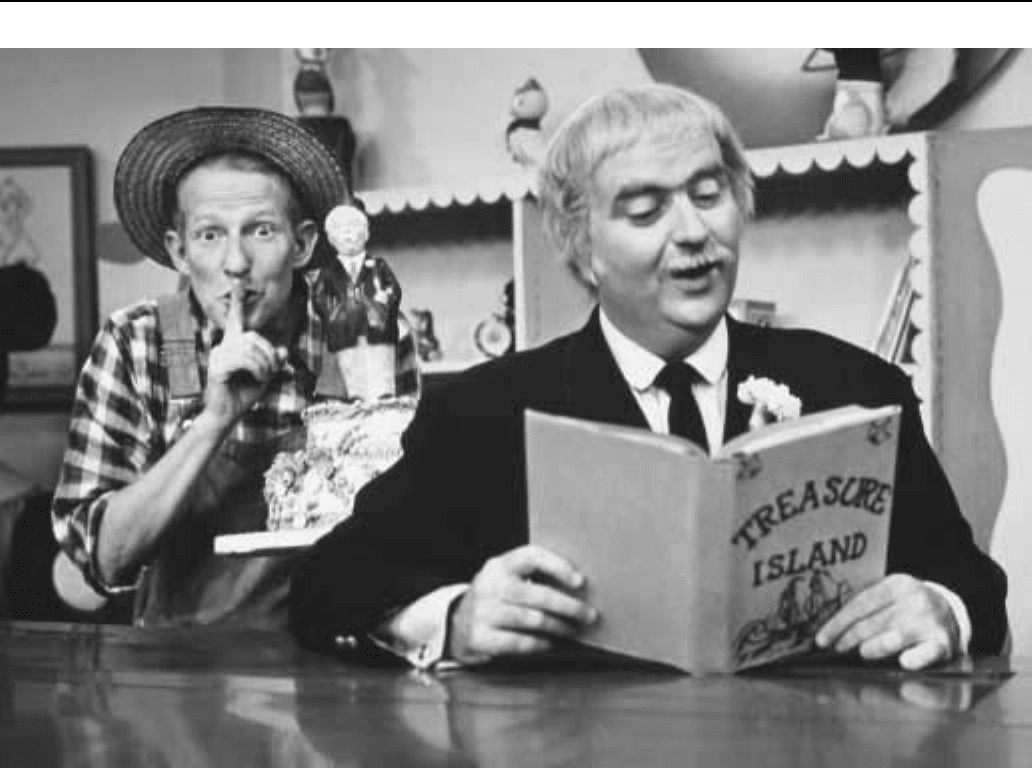
CAPTAIN KANGAROOENCYCLOPEDIA OF POPULAR CULTURE
431
A typical moment from the Captain Kangaroo show.
Keeshan got his start in the world of television early, working as
a page at NBC when he was a teenager in Queens, New York. He left
New York to perform his military service in the Marines, then
returned to NBC where he got a job with the newly-popular Howdy
Doody Show. He created and played the role of Clarabell the Clown
on that show and was so successful that in 1955 CBS offered to give
him his own show. Keeshan created Captain Kangaroo, and the show
ran for 30 years on CBS. In 1984, it moved to PBS (Public Broadcast-
ing System), where it continued to run for another six years.
A father of three, and later a grandfather, Keeshan had always
been a supporter of positive, educational entertainment for children.
Even after leaving the role of the Captain, he continued to be an
advocate for children: as an activist, fighting for quality children’s
programming; as a performer, planning a cable television show about
grandparenting; and as a writer, producing gently moralistic child-
ren’s books as well as lists for parents of worthwhile books to read
to children.
The soft-spoken Keeshan was so identified with the role of
Captain Kangaroo that he was horrified when, in 1997, Saban
Entertainment— producers of such violence- and special effects-
laden shows as Power Rangers and X-Men—began to search for a
new, hip Captain to take the helm of The All-New Captain Kangaroo.
Saban had offered the role to Keeshan, but withdrew the offer when
he insisted on too much creative control over the show. Keeshan did
not want modern special effects and merchandising to interfere with
the Captain’s gentle message. ‘‘I really think they believe that kids are
different today than they were in the 1960s or 1970s,’’ he said.
‘‘That’s nonsense. They’re still the same, still asking the same
questions, ‘Who am I? Am I loved? What does the future hold for
me?’’’ In the end, however, Saban chose to stay with the proven
formula by choosing John McDonough to play the new Captain.
Neither hip nor slick, McDonough is a middle-aged, soft-spoken
lover of children, not so different from Keeshan’s Captain.
In an ironic twist, in 1995, the Motion Picture Association of
America, trying to forestall legislation against violence in children’s
programming, insisted that violence in programming does not lead to
violent activity. In fact, they suggested that the opposite might be true
and that perhaps Captain Kangaroo and other mild programming of
the 1950s led directly to the unrest of the 1960s and 1970s. Though
Keeshan scoffed at the implication, the tactic seems to have worked
and the legislation was defeated.
The media now abounds with choices of children’s program-
ming. With dozens of cable channels, children’s shows can be found
somewhere on television almost 24 hours a day. If that fails, parents
can buy videos to pop in whenever some juvenile distraction is
needed. In 1955, when the Captain debuted, and for many years
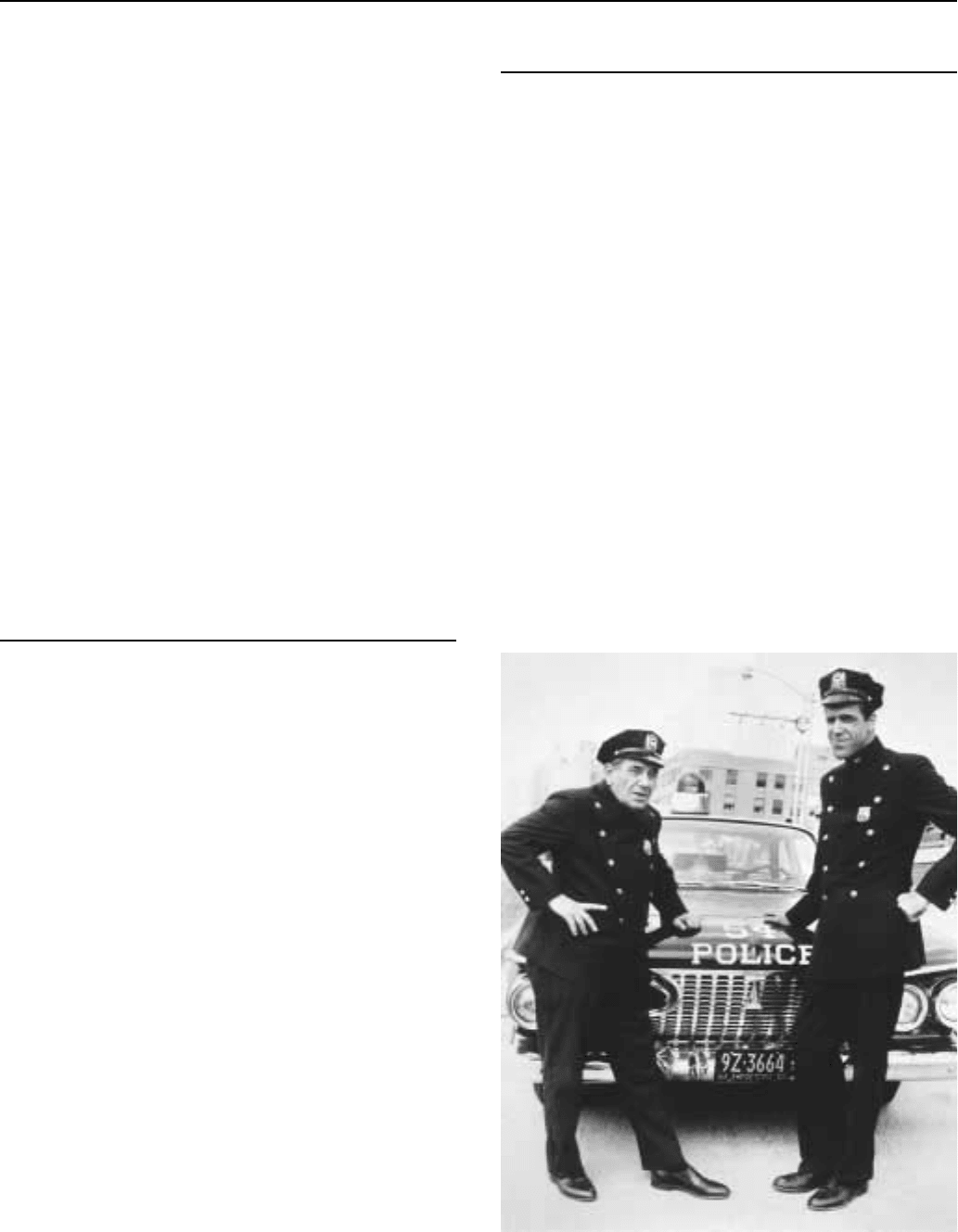
CAPTAIN MARVEL ENCYCLOPEDIA OF POPULAR CULTURE
432
afterwards, there were only three television channels that broadcast
from around six a.m. until midnight. For children seeking entertain-
ment, for parents seeking amusement for their children, even for
adults seeking something to wile away the early morning hours, there
was only Captain Kangaroo. For these people, the Captain was like
an old friend, quietly accepting and unchanged over 30 years on the air.
In the 1960s, country music performers The Statler Brothers had
a hit song, ‘‘Countin’ Flowers on the Wall,’’ where a young man
describes his bleak and sleepless nights after being left by his girl.
Perhaps no one born after the video-and-cable era will be able to
completely grasp the desolate joke in the lines, ‘‘Playin’ solitaire ’til
dawn / With a deck of fifty-one / Smokin’ cigarettes and watchin’ /
Captain Kangaroo / Now, don’t tell me / I’ve nothing to do.’’
—Tina Gianoulis
F
URTHER READING:
Bergman, Carl, and Robert Keeshan. Captain Kangaroo: America’s
Gentlest Hero. New York, Doubleday, 1989.
Keeshan, Robert. Good Morning Captain: Fifty Wonderful Years
With Bob Keeshan, TV’s Captain Kangaroo. Minneapolis, Fairview
Press, 1996.
Raney, Mardell. ‘‘Captain Kangaroo for Children’s TV.’’ Education-
al Digest. Vol. 62, No. 9, May 1997, 4.
Captain Marvel
Captain Marvel was among the most popular comic-book
superheroes of the 1940s. Created in 1940 by Bill Parker and C.C.
Beck for Fawcett Publications, Captain Marvel was an ingeniously
simple premise. When teenager Billy Batson speaks the magic word
‘‘Shazam,’’ he transforms into a muscular adult superhero. Like DC
Comics’ Superman, Captain Marvel possessed superhuman strength,
invulnerability, and the power of flight.
Captain Marvel enlisted along with most other comic-book
superheroes into World War II and did his part to disseminate
patriotic propaganda about the virtues of America’s war effort. He
was the top-selling comic-book character of the war years—even out-
performing Superman for a time. By 1954, however, falling sales and
a long-standing lawsuit by DC over the character’s alleged similari-
ties to Superman forced Captain Marvel into cancellation. DC later
purchased the rights to the character and has published comic books
featuring him since the 1970s.
—Bradford Wright
F
URTHER READING:
Benton, Mike. Superhero Comics of the Golden Age. Dallas, Taylor
Publishing, 1992.
O’Neil, Dennis. Secret Origins of the Super DC Heroes. New York,
Warner, 1976.
Captain and the Kids, The
See Katzenjammer Kids, The
Car 54, Where Are You?
The situation comedy Car 54, Where Are You?, which ran on
NBC from 1961 to 1963, occupies a unique place in television history.
While it is a truly humorous look at the shenanigans of the police
officers assigned to the fictional 53rd precinct in the Bronx, it is most
often remembered as a minor cult classic filled with performers better
known from other series and for its catchy opening theme song. The
show focused on patrol-car partners Gunther Toody (Joe E. Ross) and
Francis Muldoon (Fred Gwynne) as they attempted to serve and
protect the citizens of New York. A more unlikely pairing of police
officers had never been seen on television. Toody was a short and
stocky, often slow-witted, talkative cop, and Muldoon was a tall and
gangly, usually laconic, intellectual. Episodes were filled with the
usual sitcom fare as the partners’ bumbling caused misunderstandings
within their squad, such as the time Toody attempted to make a plaster
cast of a fellow patrolman’s aching feet and chaos ensued. Each week
the pair caused their superior, Captain Block, to become infuriated as
they made more trouble for the Bronx than they resolved.
In many respects, Car 54, Where Are You? can be considered
somewhat of a sequel to the popular 1950s sitcom You’ll Never Get
Rich, which is also known as The Phil Silvers Show. That series,
created by writer-producer-director Nat Hiken and starring comedian
Phil Silvers as Sergeant Bilko, focused on the misadventures of an
oddball assembly of soldiers at Fort Baxter, a forgotten outpost in
Kansas. Hiken was a gifted writer who had worked on Fred Allen’s
A publicity shot from the television show Car 54, Where Are You?

CARAYENCYCLOPEDIA OF POPULAR CULTURE
433
radio show and later contributed to Milton Berle’s Texaco Star
Theater. The Silvers show had been a great hit as Sgt. Bilko and his
motor pool staff schemed, gambled, and tried to avoid all types of
work. When that series ended in 1959, Hiken decided to translate
some of its comic sensibility to another setting. Like its predecessor,
Car 54 was a series about men who failed to live up to the dignity of
their uniform. Unlike the schemers of Fort Baxter, however, the
police of the 53rd precinct were trying their best—though often
failing. Hiken filled the series with many performers featured on the
earlier show. Joe E. Ross had played Mess Sergeant Rupert Ritzik
‘‘the Lucretia Borgia of Company B.’’ The character of Gunther
Toody was an exact replica of the Ritzik character even down to his
trademark expression of ‘‘oooh-oooh-oooh.’’ Toody’s nagging wife
Lucille was played by Beatrice Pons, the actress who had appeared as
Mrs. Ritzik. Fred Gwynne, who had been a Harvard educated
advertising man, was also a featured player on the Bilko show.
Furthermore, many of the other officers had been seen as soldiers at
the mythical Fort Baxter.
The core of the series was the great friendship Toody and
Muldoon had forged from their many years patrolling the streets in
Car 54. Their contrasting natures had meshed perfectly despite the
fact they had absolutely nothing in common. Author Rick Mitz best
captured their relationship when he described the pair by noting,
‘‘Toody was the kind of guy who would say that he thought he should
get a police citation for ‘having the cleanest locker.’ Muldoon was the
kind of guy who would say nothing.’’ Many episodes took place away
from the police station and explored the partners’ home lives. Toody
and his frustrated wife often included the shy bachelor into their
evening plans. One of the series’ best episodes centered on Toody’s
mistaken idea that Lucille and Muldoon were having an affair.
Surrounding them was a cast of top character actors including Paul
Reed, Al Lewis, Charlotte Rae, Alice Ghostley, and Nipsey Russell.
Many of these performers would later graduate to star in their own TV
shows. All the characters on the program depicted an ethnic reality
little seen on early television. Toody’s Jewishness and Muldoon’s
Irish-Catholic background were more realistic than the bland charac-
ters, with no discernable heritage, seen on other programs. The series
was also distinguished by Hiken’s decision to film on the streets of
New York. Sets were constructed on the old Biograph Studio in the
Bronx. For street scenes, Toody and Muldoon’s patrol car was painted
red and white to indicate to New Yorkers that it was not actually a
police vehicle. In black-and-white film, Car 54’s unique colors
looked identical to the genuine New York police vehicles.
When it premiered in 1961, the series caused some controversy
after several police associations claimed it presented a demeaning
picture of police officers. The police department in Dayton, Ohio
dropped their own Car # 54 from the fleet after constant teasing from
the public. However, most viewers understood the series was intend-
ed as a satire that bore little relation to the lives of actual police
officers. Viewers’ affection for the show was evident in Nyack, New
York where a patrol car stolen from the police station parking lot was
nicknamed ‘‘Car 54.’’ The series ended in 1963 after failing to match
the success of Hiken’s earlier Phil Silvers program. Neither Nat
Hiken, who died in 1968, nor Joe E. Ross, who passed away in 1982,
ever again achieved the limited success they found with Car 54.
Following the show’s cancellation, Fred Gwynne and Al Lewis (who
played Sgt. Schnauzer) achieved TV immortality playing ‘‘Herman’’
and ‘‘Grandpa’’ on the monster sitcom The Munsters. Gwynne
died in 1993.
The sitcom Car 54, Where Are You? is an energetic series that
never really attained a mass audience. Its presentation of the misad-
ventures of Officers Toody and Muldoon gained a small cult audience
that only expanded after the series began to be replayed on cable’s
Nick at Night network. An awful 1994 movie version update of the
show (which was filmed in 1991) starred David Johansen and John C.
McGinley as Toody and Muldoon. It also featured rising stars Rosie
O’Donnell and Fran Drescher. Viewers of the original sitcom can
ignore the film and enjoy a quirky short-lived series that offers an
amusing update of the Keystone Kops. Furthermore, after one view-
ing it’s almost impossible to forget that opening theme, which
began: ‘‘There’s a holdup in the Bronx / Brooklyn’s broken out in
fights / There’s a traffic jam in Harlem that’s backed up to
Jackson Heights....’’
—Charles Coletta
F
URTHER READING:
Brooks, Tim. The Complete Directory to Prime Time TV Stars. New
York, Ballatine Books, 1987.
Castleman, Harry, and Walter Podrazik. Harry and Wally’s Favorite
TV Shows. New York, Prentice Hall Press, 1989.
Mitz, Rick. The Great TV Sitcom Book. New York, Perigee, 1983.
Car Coats
Car coats originated in the United States in the 1950s with the
American migration to suburbia. Popular through the 1960s, they
were designed to be convenient for driving, at hip to three-quarter
length. Car coats were regulation outerwear: woollen, semi-fitted,
frequently double-breasted, with various design features such as
back-belts and toggles. The same coat is known to 1990s consumers
as the stadium, toggle, or mackinaw coat.
—Karen Hovde
Caray, Harry (1919-1998)
In his 53 years as a Major League Baseball broadcaster, Harry
Caray’s boisterous, informal style, passionate support for the home
team, and willingness to criticize players and management made him
a controversial fan favorite; and towards the end of his career,
something of an anachronism. During his first 25 seasons (1945-69)
with the St. Louis Cardinals, KMOX’s 50,000 watt clear channel
signal and an affiliated network of small stations in the South,
Southwest, and Midwest gave Caray regional exposure. He is perhaps
best known for his catch phrase ‘‘Holy Cow,’’ and the sing-along-
with-Harry rendition of ‘‘Take Me Out to the Ballgame.’’ Caray
achieved national prominence when he moved to WGN and the
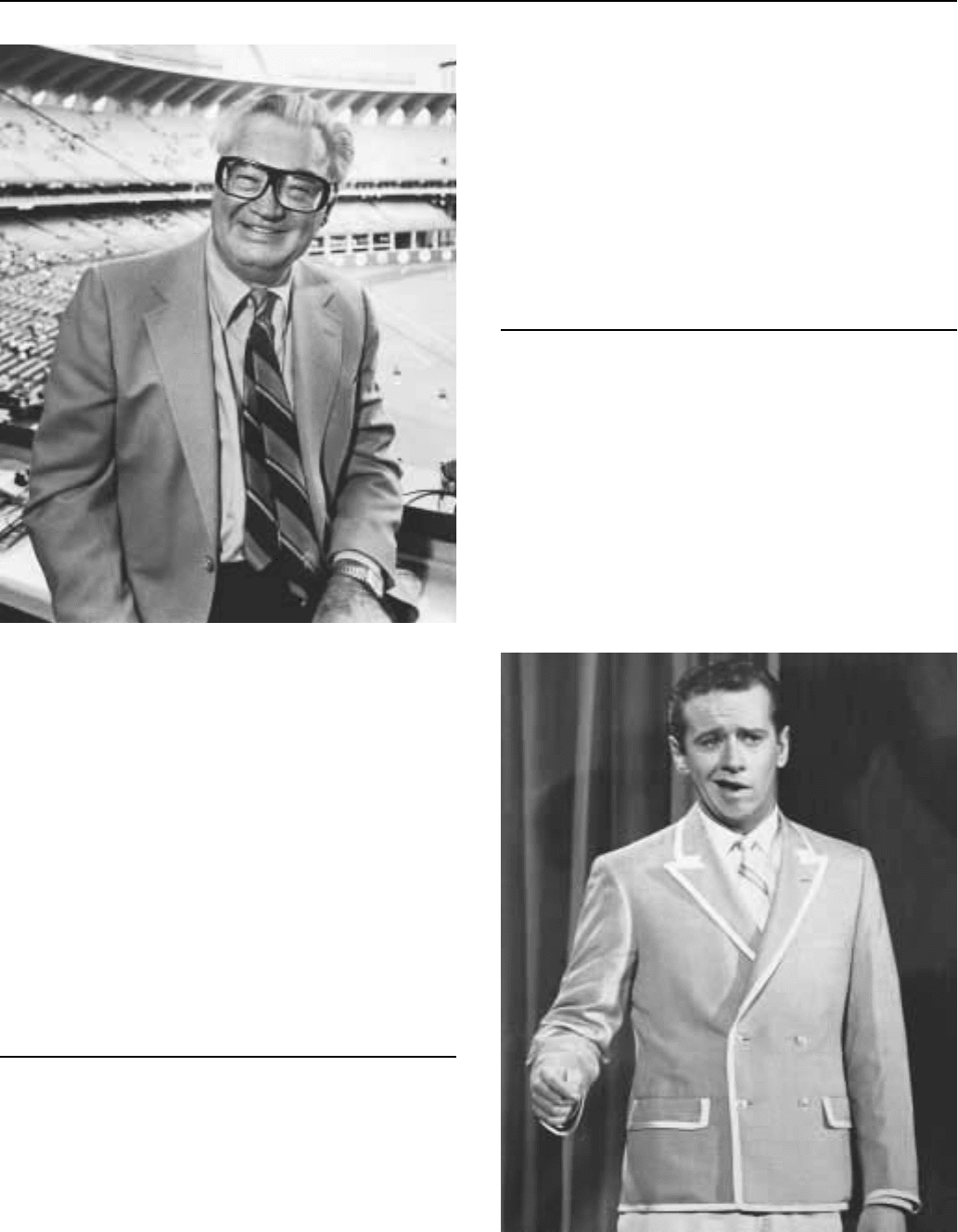
CAREY ENCYCLOPEDIA OF POPULAR CULTURE
434
Harry Caray
Chicago Cubs in 1983. Cable television was then in its infancy, and
largely on the strength of its sports programming, WGN became one
of the first national superstations.
—Thomas J. Mertz
F
URTHER READING:
Caray, Harry, with Bob Verdi. Holy Cow. New York, Villard
Books, 1988.
Smith, Curt. Voices of the Game: The First Full-Scale Overview of
Baseball Broadcasting, 1921 to the Present. South Bend, Indiana,
Diamond Publishing, Inc., 1987.
Carey, Mariah (1970—)
An uproar of praise accompanied Mariah Carey’s 1990 musical
debut. Her first single, ‘‘Vision of Love,’’ immediately established
her as a major talent and showcased her trademark vocal sound: a
masterful, multi-octave range, acrobatic phrasing, ornamented vocal
trills, and uncanny, piercing notes in her upper vocal register. It was a
sound that was clearly influenced by soul music tradition, yet one that
Carey made uniquely her own. Unlike many popular singers, she
wrote or co-wrote much of her music. Because of her beautiful and
visually striking appearance, she gained additional popularity as a sex
symbol, appearing continually—often seductively or even scantily
dressed—in national magazines. She found great success year after
year, following her debut, and was, for nearly a decade, America’s
most popular musician.
—Brian Granger
F
URTHER READING:
Whitburn, Joel. The Billboard Book of Top 40 Hits. New York,
Billboard Publications, 1996.
Carlin, George (1938—)
During the 1960s, George Carlin revolutionized the art of stand-
up comedy. He employed observational humor, adding a comic twist
to everyday occurrences in order to comment on language, society,
sports, and many mundane aspects of American daily life. His
captivating stage presence and seemingly endless supply of material
enabled him to succeed in giving comedy concerts. Rarely before had
a comedian drawn such large crowds to a theater just to hear jokes.
George Carlin was born on May 12, 1938, in the Bronx, New
York City. With one older brother, Pat, George grew up in Morningside
Heights, which he calls ‘‘White Harlem,’’ and took the title of his
album Class Clown from his role in school as a child. He dropped out
of high school and enlisted in the Air Force. He ended up in
Shreveport, Louisiana, where he became a newscaster and DJ at radio
George Carlin
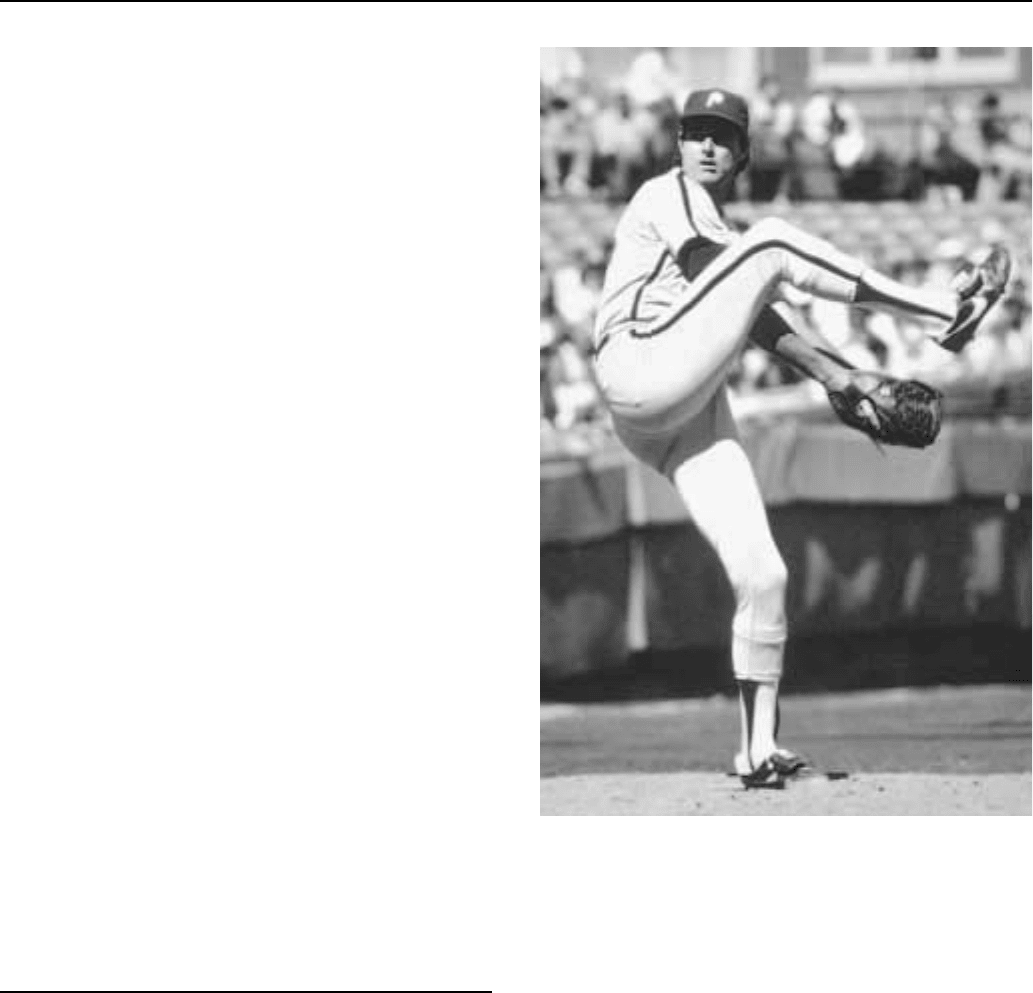
CARLTONENCYCLOPEDIA OF POPULAR CULTURE
435
station KJOE, while still serving in the Air Force, and after his
discharge continued worked in radio, moving to Boston in 1957
where he joined radio station WEZE.
Over the next few years, Carlin had many radio jobs, and in 1959
he met newsman Jack Burns at KXOL in Fort Worth, Texas. Teaming
with Burns in the early 1960s, he moved to Hollywood where he came
to the attention of Lenny Bruce. Burns and Carlin secured spots in
mainstream comedy clubs and made an appearance on The Tonight
Show with Jack Paar. When Jack Burns left the team to work with
Avery Shrieber, George Carlin began to make a name for himself as a
stand-up comedian, and during the decade became a fixture on
television, appearing on the Johnny Carson, Mike Douglas, and Merv
Griffin shows, and writing for Flip Wilson. His first comedy album,
Take-Offs and Put-Ons, came out in 1972.
Also in 1972, he was arrested after doing his ‘‘Seven Words You
Can Never Use on Television’’ routine at a Milwaukee concert. The
charges were thrown out by the judge, but George Carlin will forever
be associated with an important test of the First Amendment as
applied to broadcasting—the routine was later the crux of a Supreme
Court case, FCC v. Pacifica Radio, whose station WBAI in New York
City broadcast the offending album. The case helped launched the
FCC’s ‘‘safe harbor’’ policy, allowing profanity on the air only after
10 PM (later changed to midnight and then extended to a 24-hour ban
on indecent material).
Carlin continued releasing albums, Occupation: Foole, FM/AM,
and Toledo Window Box, among others, and earning Grammy awards.
Throughout the 1970s, 1980s, and 1990s, Carlin kept a public career
in comedy going through television and movie appearances, record-
ings and live concerts, frequently performing at colleges and music
festivals. He has continued developing his particular brand of humor,
with its combination of satire, wordplay, and social commentary.
—Jeff Ritter
F
URTHER READING:
Carlin, George. Brain Droppings. New York, Hyperion, 1997.
———. Sometimes a Little Brain Damage Can Help. Philadelphia,
Pennsylvania, Running Press, 1984.
Carlton, Steve (1944—)
During the second half of his major league pitching career, Steve
Carlton did not speak to reporters, preferring to let his left arm do the
talking for him. Out of such determined resolve Carlton fashioned an
exceptional career that left him destined for the Baseball Hall of
Fame. A multiple Cy Young award winner, second only to Nolan
Ryan in career strikeouts, Carlton became the first major leaguer
since Robert Grove and Vernon Gomez to be universally known
as ‘‘Lefty.’’
A Miami native, Carlton signed with the St. Louis Cardinals
franchise and entered the major leagues in 1965. He became the
team’s number two starter, behind the fierce right-hander Bob Gib-
son, and helped the Cardinals to two pennants and the 1967 World
Series. Yet Carlton never seemed to get respect; even the 1969 game
when he struck out a then record nineteen New York Mets came
during a defeat. After a salary dispute with Cardinals management in
late 1971, he was traded to the woebegone Philadelphia Phillies for
Steve Carlton
pitcher Rick Wise. Wise was the only star on the perennial also-rans,
as well as the Phillies’ most popular player. Carlton responded to his
uncomfortable new surroundings with one of the most dominant
seasons in baseball history. While the 1972 Phillies won only 59
games, Carlton won 27, or nearly half his team’s total, all by himself.
During one stretch he won 15 games in a row. Combined with a 1.97
earned run average and 310 strikeouts, Carlton won his first National
League Cy Young Award.
As Carlton developed, gradually so did the Phillies, as Carlton
was joined by third baseman Mike Schmidt and, eventually, Tug
McGraw, and Pete Rose. Carlton led the team to six division titles and
two pennants between 1976 and 1983. And in 1980 his two victories
in the World Series gave the Phillies their first world championship.
Carlton was an efficient left-hander who routinely led the major
leagues by pitching nine-inning games in less than two hours and
twenty minutes. Hitting him, slugger Willie Stargell once lamented,
was like drinking coffee with a fork. Under the tutelage of Phillies
trainer Gus Hoefling, Carlton embarked on a rigorous physical
regimen, including karate, meditation, and stretching his left arm in a
bag of rice. He also stopped talking to the media in 1979, following a
feud with a Philadelphia columnist. While Carlton was loquacious
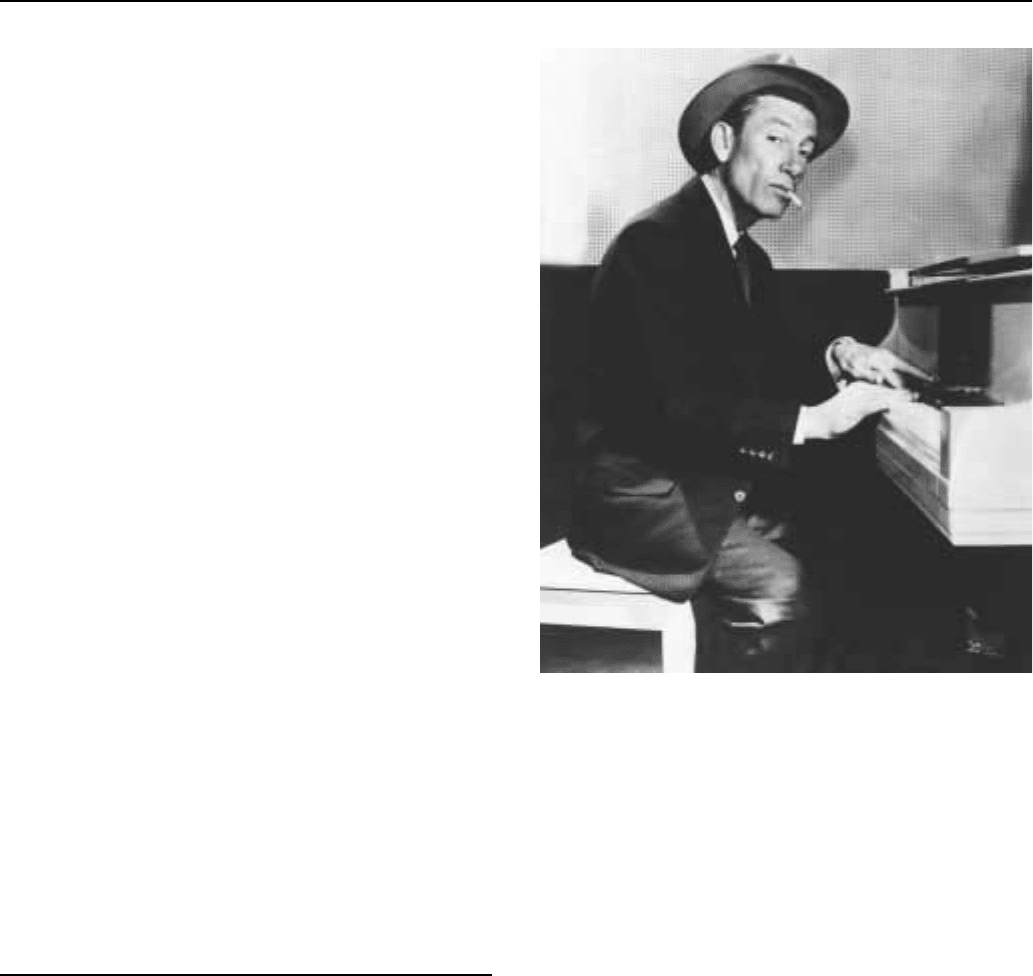
CARMICHAEL ENCYCLOPEDIA OF POPULAR CULTURE
436
with teammates on many subjects (in particular his hobby, wine
collecting), he was mute to the press.
In 1983 and 1984, Carlton competed with the ageless Nolan
Ryan for bragging rights to the all-time career strikeout record.
Carlton held the top spot intermittently before Ryan pulled away in
1984. Carlton’s total of 4,136 strikeouts is still the second highest of
all time, and over 600 more than Walter Johnson’s previous record.
In 1982, the 37-year-old Carlton won 23 games and a record
fourth Cy Young Award. The next season, he won his 300th career
game and again led the league in strikeouts. With his sophisticated
training and focus, Carlton seemed capable of pitching in the major
leagues until he was 50. Unfortunately, his pitching ability faded with
age. He won only 16 games after his 40th birthday, and poignantly
moved from team to team in the last two seasons of his career before
retiring in 1988 with a won-loss record of 329-244.
Carlton’s election to the Baseball Hall of Fame in 1994 (in his
first year of eligibility) was marred by an incident weeks later. Ending
his silence with the press, Carlton gave a rambling interview in
Philadelphia Magazine from his mountainside compound in Colo-
rado, where he claimed that AIDS was concocted by government
scientists, that teacher’s unions were part of an organized conspiracy
to indoctrinate students, and that world affairs were controlled by
twelve Jewish bankers in Switzerland. Most Phillies fans ignored his
idiosyncratic political commentary, however, and attended his
Cooperstown induction that summer.
—Andrew Milner
F
URTHER READING:
Aaseng, Nathan. Steve Carlton: Baseball’s Silent Strongman. Minne-
apolis, Lerner Publishing, 1984.
James, Bill. The Bill James 1982 Baseball Abstract. New York,
Ballantine, 1982
———. The Bill James Historical Baseball Abstract. New York,
Villard, 1988.
Westcott, Rich. The New Phillies Encyclopedia. Philadelphia, Tem-
ple University Press, 1993.
Carmichael, Hoagy (1899-1981)
Children who play the perennial ‘‘Heart and Soul’’ duet on the
family piano might not realize that the tune was written in 1938 by one
of America’s most prolific popular song composers, Hoagy Carmichael.
Carmichael also became one of the century’s most iconic pianists, as
his distinctive appearance—gaunt and glum, hunched over the up-
right piano in a smoky nightclub—endures through numerous Holly-
wood films from the 1940s and 1950s, including classics such as To
Have and Have Not and The Best Years of Our Lives (in Night Song he
even shares billing with classical concert pianist Arthur Rubinstein).
Carmichael’s music lives on, too, having thoroughly entered the
American musical canon. Of his 250 published songs, ‘‘Stardust’’
(1927) is probably one of the most frequently recorded of all popular
songs (with renditions by artists ranging from Bing Crosby and Nat
King Cole to Willie Nelson and Carly Simon); ‘‘The Lamplighter’s
Serenade’’ (1942) proved to be Frank Sinatra’s solo recording debut;
and ‘‘Georgia on My Mind’’ (1931) has become that state’s
official song.
Hoagy Carmichael
Carmichael’s roots were in the 1920s Midwest, where traditional
Americana intersected with the exciting developments of jazz. Hoagland
Howard Carmichael was born on November 22, 1899, in Blooming-
ton, Indiana. His father was an itinerant laborer; his mother, an
amateur pianist, played accompaniment for silent films. In 1916, his
family moved to Indianapolis, where Carmichael met ragtime pianist
Reggie DuValle, who taught him piano and stimulated his interest in
jazz. In 1919 Carmichael heard Louis Jordan’s band in Indianapolis;
as Carmichael relates in his autobiography Sometimes I Wonder, the
experience turned him into a ‘‘jazz maniac.’’ While studying law at
Indiana University, Carmichael formed his own small jazz band, and
also met 19-year-old legendary cornetist Leon ‘‘Bix’’ Beiderbecke,
who became a close friend as well as a strong musical inspiration.
Carmichael’s earliest surviving composition, the honky-tonk ‘‘River-
boat Shuffle,’’ was written in 1924 and recorded by the Wolverines,
Beiderbecke’s jazz band (Carmichael, incidentally, wrote the soundtrack
music and played a supporting role in Hollywood’s 1950 fictionalized
version of Beiderbecke’s life, Young Man with a Horn, starring Kirk
Douglas, Lauren Bacall, and Doris Day).
After receiving his degree, Carmichael practiced law in Palm
Beach, Florida, hoping to capture part of the real estate boom market
there. Soon deciding to devote his efforts to music, Carmichael
moved to New York, but met with little success on Tin Pan Alley. It
was not until Isham Jones’s orchestra made a recording of ‘‘Stardust’’
in 1930 that Carmichael had his big break. Within a year Louis
Armstrong, Duke Ellington, and the Dorsey brothers had recorded
their own versions of other Carmichael songs (including ‘‘Georgia

CARNEGIEENCYCLOPEDIA OF POPULAR CULTURE
437
On My Mind,’’ ‘‘Rockin’ Chair,’’ and ‘‘Lazy River’’) for the
burgeoning radio audience.
During the next decade, Carmichael worked with lyricists John-
ny Mercer, Frank Loesser, and Mitchell Parish, among others. In the
late 1930s he joined Paramount Pictures as staff songwriter (his first
film song was ‘‘Moonburn,’’ introduced in the 1936 Bing Crosby
film Anything Goes), and also began appearing in films himself (the
first film he sang in was Topper, performing his own ‘‘Old Man
Moon’’). In 1944, ‘‘Hong Kong Blues’’ and ‘‘How Little We Know’’
were featured in the Warner Brothers film To Have and Have Not,
starring Humphrey Bogart and Lauren Bacall, which also marked
Carmichael’s debut as an actor. In one year (1946) Carmichael had
three of the top four songs on the Hit Parade, and in 1947 his rendition
of his own song ‘‘Old Buttermilk Sky’’ (featured in the film Canyon
Passage, and nominated for an Academy Award) held first place on
the Hit Parade for six consecutive weeks. Carmichael described his
own singing as a ‘‘native wood-note and flatsy-through-the-nose
voice.’’ It was not until 1952, however, that Carmichael and lyricist
Mercer won an Academy Award for Best Song with ‘‘In the Cool,
Cool, Cool of the Evening,’’ performed by Bing Crosby in Para-
mount’s Here Comes the Groom). Carmichael also made appearances
on television during the 1950s, hosting his own variety program, The
Saturday Night Revue (a summer replacement for Sid Caesar’s Your
Show of Shows), in 1953. In 1959 he took on a straight dramatic role as
hired ranch hand Jonesy on the television Western series Laramie.
Carmichael continued composing into the 1960s, but his two
orchestral works—‘‘Brown County in Autumn’’—and his 20-minute
tribute to the Midwest—‘‘Johnny Appleseed’’—were not as success-
ful as his song compositions. In 1971, Carmichael’s contributions to
American popular music were recognized by his election to the
Songwriters Hall of Fame as one of the ten initial inductees. He retired
to Palm Springs, California, where he died of a heart attack on
December 27, 1981.
—Ivan Raykoff
F
URTHER READING:
Carmichael, Hoagy. The Stardust Road. New York, Rinehart, 1946.
Carmichael, Hoagy, with Stephen Longstreet. Sometimes I Wonder:
The Story of Hoagy Carmichael. New York, Farrar, Staus, and
Giroux, 1965.
Carnegie, Dale (1888-1955)
Aphorisms, home-spun wisdom, and an unflagging belief in the
public and private benefits of positive thinking turned Dale Carne-
gie’s name into a household phrase that, since the 1930s, has been
uttered with both gratitude and derision. Applying the lessons that he
learned from what he perceived to be his failures early in life,
Carnegie began to teach a course in 1912. Ostensibly a nonacademic,
public-speaking course, Carnegie’s class was really about coming to
terms with fears and other problems that prevented people from
reaching their full potential. Through word of mouth the course
became hugely popular, yet Carnegie never stopped tinkering with
the curriculum, excising portions that no longer worked and adding
new material based on his own ongoing life experience. In 1936, he
increased his profile exponentially by publishing How to Win Friends
and Influence People, which ranks as one of the most purchased
books of the twentieth century. Although Carnegie died in 1955, his
course has continued to be taught worldwide, in virtually unchanged
form, into the late 1990s.
Carnegie (the family surname was Carnagey, with an accent on
the second syllable; Carnegie changed it when he moved to New
York, partly because of his father’s claim that they were distant
relatives of Andrew Carnegie and partly because the name had a
cachet of wealth and prestige) grew up on a farm in Missouri; his
family was, according to his own accounts, poverty-stricken. His
mother, a strict and devout Methodist, harbored not-so-secret hopes
that her son might become a missionary; some missionary zeal can be
seen in Carnegie’s marketing of his course. At the age of eighteen,
Carnegie left home to attend Warrensburg State Teacher’s College.
There, he made a name for himself as a riveting and effective public
speaker. Just short of graduating, he decided to quit and start a career
as a salesman in the Midwest. Despite his knack for expressing
himself, his heart was never in sales, and he was less than successful.
In 1910, Carnegie headed for New York City and successfully
auditioned for admission into the prestigious American Academy of
Dramatic Arts. The new style of acting taught at the school, radical for
its time, stressed sincerity in words and gestures. Students were
encouraged to emulate the speech and movement of ‘‘real people’’
and to move away from posturing and artificiality. Carnegie spent
even less time as a professional actor than he did as a salesman, but
this new method of acting would become a vital part of his course.
In 1912 Carnegie was back in sales, working for the Packard car
and truck company, after a disillusioning tour with a road company
that was staging performances of Molly Mayo’s Polly of the Circus.
Living in squalor and unable to make ends meet, Carnegie nonethe-
less walked away from his Packard sales job and began doing the one
thing he felt qualified to do: teach public speaking to businessmen.
The director of a YMCA on 125th Street in Harlem agreed to let
Carnegie teach classes on commission. (At that time most continuing
adult education took place at the YMCA or YWCA.) Carnegie’s
breakthrough came when he ran out of things to say and got the class
members to talk about their own experiences. No class like this had
ever been offered, and businessmen, salesmen, and, to a lesser extent,
other professionals praised the course that gave them the opportunity
to voice their hopes and fears, and the means to articulate them. Both
academic and vocational business courses were in short supply during
this time, and most professionals had little understanding of commu-
nications or human relations principles. Carnegie anticipated this
need and geared his course toward the needs of the business professional.
From 1912 until his death in 1955, Carnegie’s chief concern was
the fine-tuning and execution of his course, formally titled The Dale
Carnegie Course in Public Speaking and Human Relations, but fondly
known to millions of graduates as the ‘‘Dale Course.’’ Carnegie also
attempted to publish a novel, The Blizzard, which was ill-received by
publishers. His publishing luck changed in 1936, when Leon Shimkin
of Simon & Schuster persuaded him to write a book based on lectures
he gave in various sessions of the course. How to Win Friends and
Influence People was published in November of that year and became
an instant best-seller. Following this accomplishment, Carnegie pub-
lished a few similar works that also became bestsellers, most notably
How to Stop Worrying and Start Living. None of his subsequent
literary endeavors, however, matched the success of How to Win
Friends, although they are all used, to some extent, in his course.
With the huge sales of the book, Carnegie faced a new challenge:
meeting the growing public demand for the course. In 1939, he agreed
to begin licensing the course to other instructors throughout the
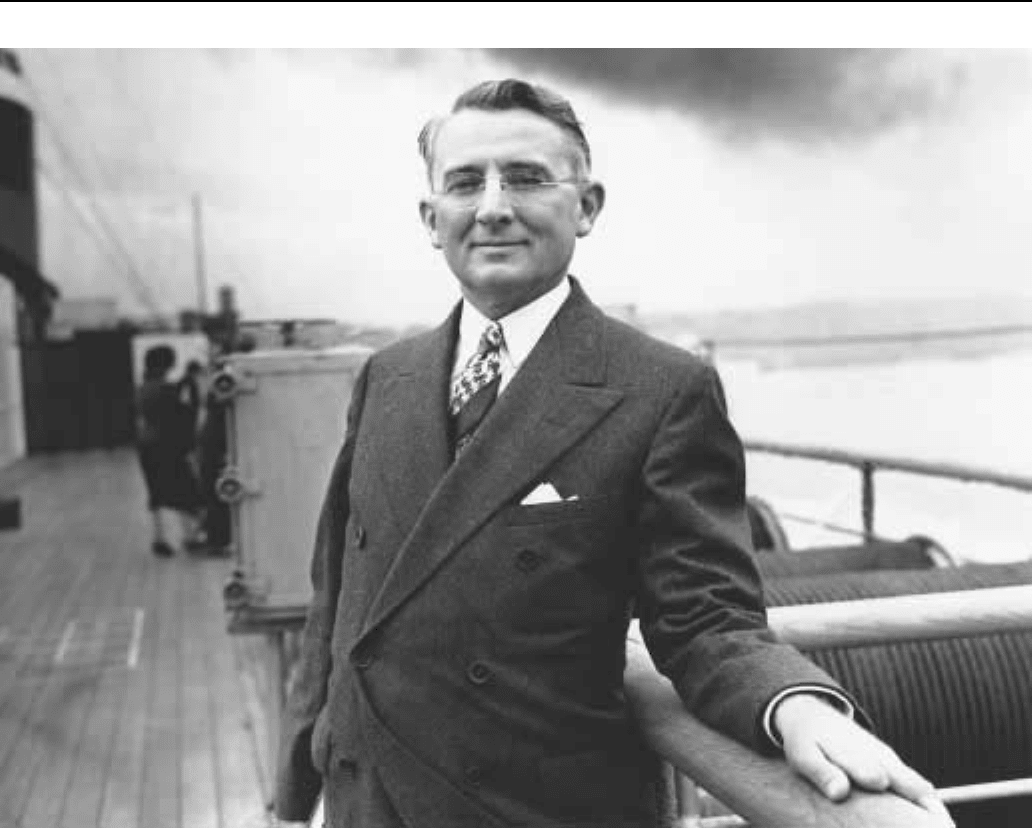
CARNEGIE ENCYCLOPEDIA OF POPULAR CULTURE
438
Dale Carnegie
country. By now divorced from his first wife (the marriage ended
unhappily in 1931—Carnegie’s Lincoln the Unknown, with its unflat-
tering portrayal of Mary Todd Lincoln, was later revealed by the
author to be ‘‘largely autobiographical’’), he met Dorothy Vanderpool,
whom he would marry in 1941. Dorothy, a graduate of the Dale
Course, became an ardent supporter of her husband’s work and was
responsible for making the business a successful enterprise long after
her husband’s death. When she died, on August 6, 1998, the Dale
Carnegie Course, mostly unchanged in form and content, was still
going strong.
The Great Depression transformed Carnegie’s program from a
relatively successful endeavor into a cultural monument. His low-key
optimism and no-nonsense approach to human relations proved
irresistible to the massive number of Americans who were unem-
ployed. The publication of his book meant that his message, and his
appeal, could spread much further and faster than it had through the
auspices of the course. A year after its publication, the book’s title was
a permanent part of the language; the phrase ‘‘How to Win Friends
and Influence People’’ quickly overshadowed Dale Carnegie and his
course, and became a catch-phrase for enthusiasm borne of naiveté, as
well as a euphemism for manipulative styles of dealing with others.
Carnegie’s appeal was always complex and convoluted. His
book spoke to the hopes and fears of an entire nation beset by serious
economic difficulties, and yet many people thought his ideas were too
simplistic and out of tune with the times to take without a heavy dose
of irony. He had his share of famous critics as well, such as James
Thurber and Sinclair Lewis, who reviled How to Win Friends in their
writings. Apart from the high-minded criticism of these and other
intellectuals, the main obstacle that kept people from signing up for
Carnegie’s course was the same thing that won over many other
graduates: enthusiasm. The unbridled enthusiasm that was such a part
of the course, and that students demonstrated during open-house
sessions, could be off-putting as well as inspiring; people were unsure
whether it was contrived or real. There was a surge of renewed public
interest in the late 1980s, when Lee Iacocca revealed in his autobiog-
raphy the extent to which Carnegie’s course had influenced him and
his willingness to pay for his employees to take the course. In the end,
Carnegie’s sustained popularity was due as much to the controversy
caused by the public’s inability to take him completely seriously as to
the man’s teachings and writings.
—Dan Coffey
